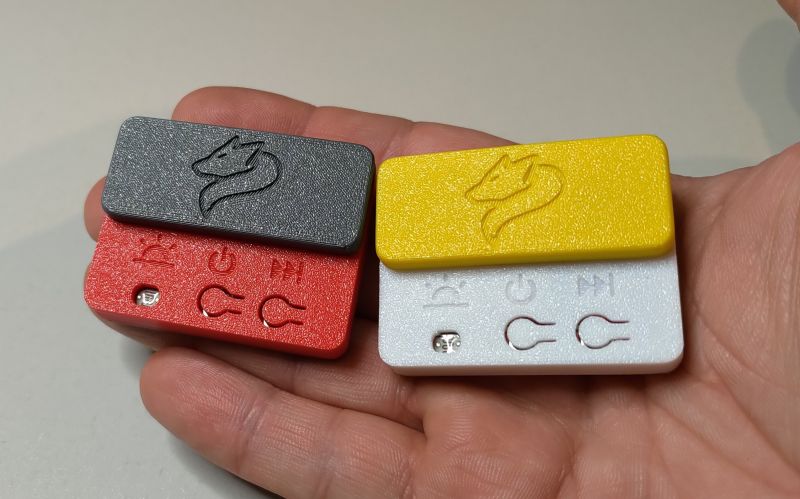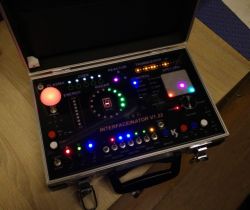
What some on the forum know is that I like LED blinking. In this project, I gave it the maximum vent and was able to get carried away by the wave to such an extent that by the end I had had enough
You remember Earth Command Center by colleague @ reaven22? Yes, it was his design that was the inspiration for my construction and even for this occasion I asked him for permission to use the lead melody from his suitcase, but on sound details later
Watching the CDZ project a long time ago and contributing to the topic at the same time, I didn't even think that I would have the opportunity to do something similar in the future. Well, life sometimes surprises and when a cute nephew shows up, Uncle has to do something.
The construction took me some time, and it was created in full conspiracy for at least a year. Maybe two people besides me knew about everything. Even my daughters did not notice that it was supposed to be a toy - daddy does the new driver and that's it.
What were the assumptions then? Initially, it was supposed to be simple, some LEDs, some switches, buttons. In the meantime, ambition prevailed and ideas began to sprout slightly diversifying the fun - gameplay. A quick decision - some Atmega and shift registers to cover the buttons and lights, each of them freely programmable and generating sound effects. When, after several dozen hours of devising the layout and possibilities, I accidentally flashed somewhere on the WS2811 internet pages in DIP - the decision was immediate. Half of the LEDs were replaced in the project, thanks to which I was able to get rid of 6 pcs of 74HC595 registers, which made the schematic and the board extremely simple, and at the same time drastically increased the playability. I went back to the point of designing and thinking about new possibilities.
In total, some 200 hours of thinking, planning, designing, soldering and programming (just over 4500 lines of program in C written from scratch) resulted in a device that not only lights up and makes sounds, but also has sewn educational options (e.g. fun colors, manual exercises with precise turning of knobs, simple rhythmics, etc.) and memory exercises (several versions). The latter option is particularly interesting due to the scalability of the game - even parents can do the competition
The two-and-a-half-year-old recipient is probably satisfied, and his parents, I have the impression, were more surprised by the suitcase than he was
The device is designed in such a way as to logically combine certain elements, dependencies and react to signals. I introduced a random element (it can be changed with a hidden option or turned off completely) thanks to which games in modules (if they are active) start after a random time and expect the operator's reaction.
Admittedly, the toddler will not use all the possibilities right away, but I announced to parents that you can absolutely not leave the device alone with this device, and they can use it (memory games start easily, but it gets really hardcore as you win).
As for a child, a few minutes of play is absolutely enough and the joy of the flashing lights is ahead. Anyway, what kind of child will take more than 10-15 minutes.
The toddler liked to click with a microwave and an oven, so I think that this suitcase will be a much better and safer option for him
And one more important feature - there are no instructions for this. Searching for and discovering the suitcase's possibilities is all the fun.
And a few more technical details.
Ultimately, the system is controlled by Atmega328 16 MHz, and it is helped by 9 74hc595 registers - some of them are inputs for button operation, and some as LED control outputs. Quite a large PCB ordered from Allpcb.
Hardware PWM is used to generate melodies and audio effects. In retrospect, I wish I had made two audio channels (the board was ready and some changes would be needed). All sounds are synthesized (including explosions, crackles, etc) and this had to be handled in time with sending the package to WS_LED. Added to this is the control of shift registers with a slightly modified software SPI to make it easier to read the input states. I do not give the diagram because there is nothing special about it. WS chain connection and rej595 are standard, as is the connection of potentiometers for analog inputs. There are no miracles here, just the basic rules straight from the beginner's guides
After long thoughts on how to power this device, I fell on a small 2200 mA powerbank, which should be enough for about 8-10 hours of fun without a break. It is convenient and practical. The entire device does not exceed a current consumption of approximately 150 mA.
I used ISD1820 to record and play back audio, which turned out to be a shot at 10, because whoever would not touch the suitcase, he likes this option the most
There is also, of course, a power indicator with signaling. When the suitcase opens, the entire system is automatically turned on and the ENERGY module shows the battery status for a few seconds, and then goes to normal operation. If the status is too low, the device will not go into play mode, but will sound an alarm.
The housing, as you can see, is an ordinary suitcase, and the base of the switches and lights is 5 mm milky plexiglass, and all the holes are drilled on a large CNC machine by a friend (once again, many thanks to Grzes
Oh, the sound. in total, there are nearly 40 different effects and melodies. I first "compose" the theme melodies in a music program to transfer them easily to the processor later. It was more difficult with special effects - some of them required dozens of tests on foot to make them sound the way I wanted them to. And below my friend @ reaven22's melody as one to choose from the menu :)
A few photos from the assembly stage.
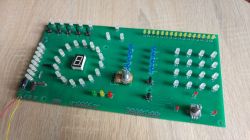
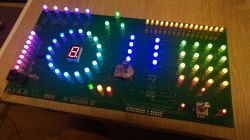
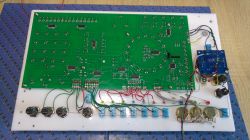
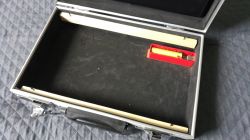
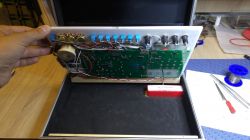
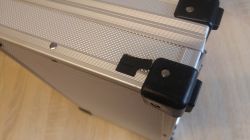
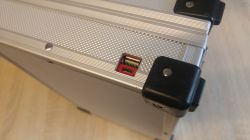
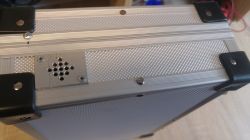
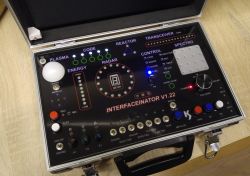
And this was the toddler's reaction (and then the presentation of the suitcase).
Cool? Ranking DIY



